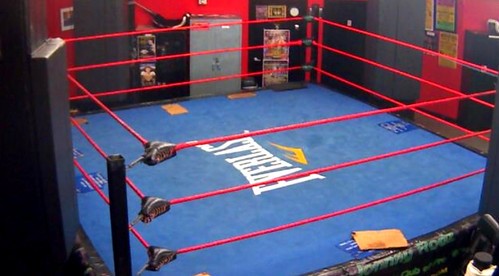Want to have some adrenaline rush playing a sport that combines exercises and fun, quirky moves? Try your hand at Amateur Boxing.
It is a highly rigorous physical activity but an equally thrilling one. Even though it is similar to Professional Boxing, it has its own differences.
Take a chance on Aviator Bet if you like the thrill of gambling and are ready to test your luck. Here, you can bet on a boxing round and try your luck. A great way to earn some quick cash while enjoying your favorite sport!
Let’s discuss in detail how amateur boxing differs from professional boxing.
What is Amateur Boxing?
Amateur Boxing Competitions are for candidates just venturing into the boxing world. It is often considered the gateway to professional-level boxing.
Key Differences Between Amateur and Professional Boxing
Professional Boxing, or the Pro circuit, is the ultimate level of boxing. It is more organized and stringent with its rules and procedures. While the end goal or target in both Amateur and Professional Boxing is the same, the rules for achieving that in both are separate.
Amateur boxing rules are considered more lenient.
Some of the key differences between both are as follows:
1. Scoring System
Amateur Boxing – The Primary goal for the candidates is to score maximum points for clean punches landed on the opponent’s scoring areas, which are the face and torso. It focuses more on boxing safety than knocking out the opponent.
Each punch is credited with one point, provided it lands cleanly without any blocks. A 10-point system is followed, and the candidate who scores 10 points is declared the winner.
Professional Boxing – Here, the candidates aim to own the ring through aggressive dominance, and judges even look for strategies to be applied while doing so.
The focus in professional boxing is more on power display, which allows for knockouts in the process. The same 10-point system is followed here, with the winner scoring the first 10 points.
2. Fight Duration and Rounds
Amateur Boxing – The rounds are typically shorter, with three rounds of three minutes each for men and two minutes for women.
Professional Box – Both the rounds and duration are ore,e with 4 – 12 rounds of three minutes each.
3. Equipment and Safety
Amateur Boxing – Larger padded gloves of 10-12 ounces are allowed to reduce the impact and ensure the protection of boxers. There are other safety considerations, such as mandatory headgear, mouthguard, and groin guard for men and breast protector for women.
Amateur Boxing Rules allows lightweight shoes and sleeveless jerseys and shorts for free movement. Boxers are subjected to both pre and post-fight medical checks to ensure their fitness.
Professional Boxing – Shorter, less padded gloves of 8 – 10 ounces are used here. Headgears are not used, which increases the chances of knockouts. Mouth guard and Groin guard are worn for boxing safety.
Boxers usually sport custom-designed Trunks bearing their sponsor’s name. They undergo more rigorous pre-fight medical checkups, including brain scans, to check their eligibility. Post-medical assistance is usually given immediately after knockouts to ensure the safety of boxers.
4. Focus on Skill Development
Amateur Boxing – Amateur boxers are trained for techniques like delivering clean punches, blocking, and countering and are focused more on speed and accuracy.
Due to shorter rounds, boxers develop the skill to fight with multiple opponents and learn their styles.
Professional Boxing – Boxers are extensively trained to develop stamina and stability and endure knockouts.
They learn skills like cutting off the ring, clinching strategically, and delivering fight-ending blows. Boxers also develop additional qualities like resilience and endurance due to the nature of the game.
These were some of the key aspects of Amateur Boxing vs Pro Boxing. Both have their own set of importance and advantages. We will also consider some other factors in amateur boxing like:
5. Training and Fitness in Amateur Boxing
Though not similar to pro boxing, amateur boxers undergo a great deal of physical training to prepare themselves for the game.
This can be said for activities like HIIT cardio training, dynamic stretching exercises, skill training and footwork drills, resistance training, and so on.
Candidates are trained on various boxing techniques like punching, footwork, defense techniques, etc., as well as drills like shadow boxing for sharpening reflexes, speed bags for coordination, etc.
They are also given training to improve their mental health.
6. Amateur Boxing Competitions and Global Events
A Candidate must go through a rigorous long route of Amateur Boxing Competitions from a grassroots level to state and national levels to be eligible to start their Pro Boxing Career.
There are various platforms like Local and Regional Competitions, National Championships, and even International Amateur Boxing Competitions.
The most prestigious being the Olympics and Commonwealth Games. The IBA, or International Boxing Association, conducts the World Boxing Championships every two years.
These global amateur boxing events provide an opportunity for boxers to refine their skills and learn newer techniques required to enhance their game.
Challenges in Amateur Boxing
Now that we have an idea of how amateur boxing differs from professional boxing let’s look at the problems this type of boxing faces in the business. The most common challenge in an amateur boxing career is the lack of funding and sponsorships.
They hinder overall growth and also receive less media attention and interest than professional boxing. This further limits their exposure in the long run. Gender disparities are also prevalent in this game.
We learned about the world of global amateur boxing events and how they are different from the main event. People who really want to get into professional boxing should look into amateur boxing.
The Pro Circuit, on the other hand, is more intense and pays more. Athletes also need to be very dedicated and ready to give up a lot to succeed.

